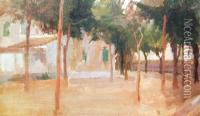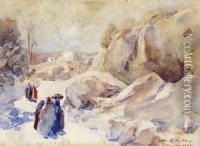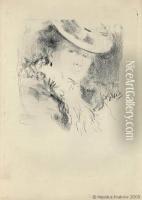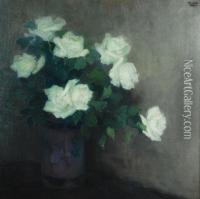Tadeusz Rychter Paintings
Tadeusz Rychter was a Polish painter, born in 1894 in the town of Zolochiv, which at the time was part of the Austro-Hungarian Empire and is now situated in Ukraine. Despite the political upheavals and territorial changes of his time, Rychter is best known for his contribution to art in the interwar period, particularly within the realm of watercolor painting.
Rychter's early life and training in the arts were influenced by the rich cultural atmosphere of Lviv, a city known for its artistic and intellectual vigor. He attended the Jan Matejko Academy of Fine Arts in Krakow, which was a leading art school in Poland. There, he developed his skills and was exposed to a variety of artistic styles and techniques. Rychter's work was characterized by his strong command of light and color, as well as his ability to capture the mood and atmosphere of his subjects.
Throughout his career, Tadeusz Rychter exhibited a keen interest in the architectural heritage and urban landscapes of the regions he lived in or visited. His paintings often depicted scenes of city life, historical buildings, and local markets, capturing the essence of Eastern European cities during the early 20th century. He was particularly fond of portraying his hometown of Lviv and later Jerusalem, where he moved in the 1920s.
Rychter's relocation to British Mandate Palestine in the 1920s marked a significant turn in his artistic journey. The light and landscapes of the Middle East profoundly influenced his work. He became a member of the vibrant artistic community in Jerusalem, where he continued to work and exhibit his paintings. His works from this period often featured the unique architectural and natural landscapes of the region, including the iconic views of Jerusalem's Old City.
Despite the challenges posed by World War II and the subsequent regional conflicts, Rychter remained active as an artist. His paintings from his Middle Eastern period are particularly notable for their historical value, providing a visual record of the era's landscape and architecture which has undergone significant changes over the decades.
Tadeusz Rychter passed away in 1976, leaving behind a rich legacy of artwork that continues to be appreciated for its historical significance and artistic beauty. His paintings are held in private collections as well as in museums, serving as a testament to his skill and his unique perspective on the world he captured in watercolor.









